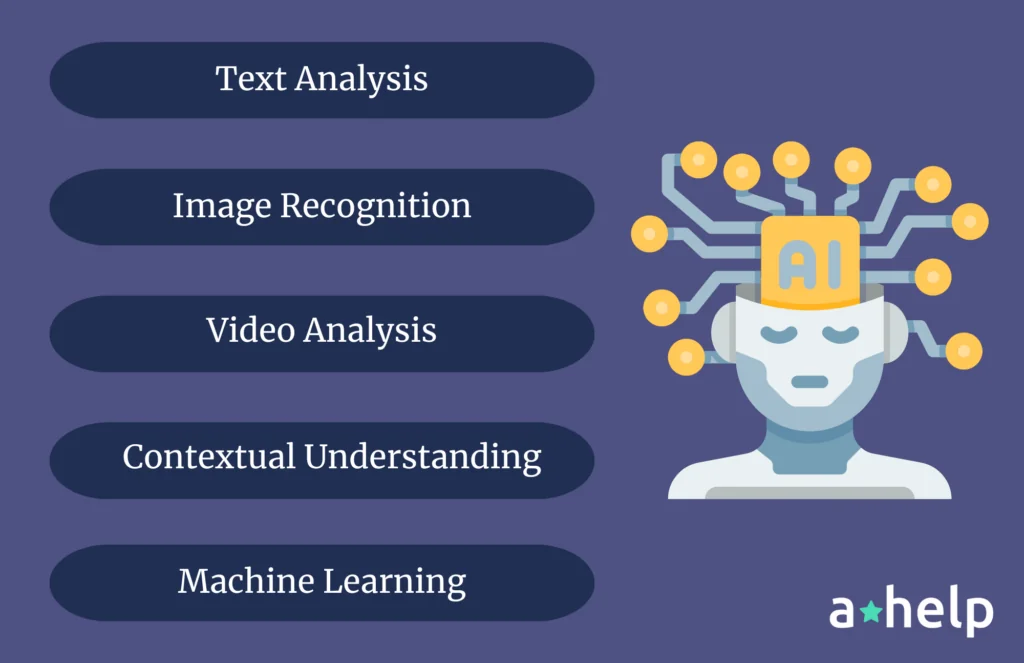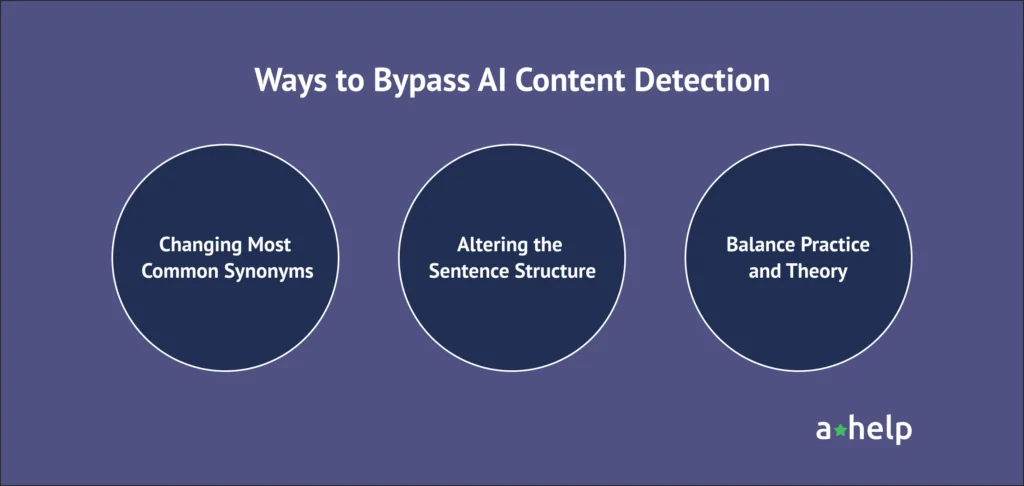The rise of AI has brought us numerous advancements, especially in content detection. AI content detection typically refers to the use of AI algorithms to analyze and identify various types of content, such as text, images, and videos. While AI content detection has proven to have many benefits, there are also concerns about its limitations and implications, like is AI plagiarism and how should you deal with it. In this guide, we decided to explore the concept of AI content detection, its usefulness for students, and ways to bypass AI detectors.

✅ AI Essay Writer ✅ AI Detector ✅ Plagchecker ✅ Paraphraser
✅ Summarizer ✅ Citation Generator
What Is AI Detection?
AI detection refers to the use of artificial intelligence to analyze various types of content. This technology is commonly used in social media platforms, online marketplaces, and content moderation systems to detect and remove inappropriate or harmful content. Moreover, many institutions and individual professors employ it to check their students’ assignments. AI detection can analyze text, images, and videos, allowing for more efficient and accurate content moderation.
AI detection tools are used for various reasons, the main being to enhance the efficiency and accuracy of content moderation. When it comes to education, AI detection mostly refers to tools used by teachers and professors to find out whether there are cases of academic dishonesty in your papers. Cheating is a no-go approach, especially in prestigious universities and colleges, and AI detection services automate the assessment process. But this isn’t the only context where people use AI detectors.
On social media platforms, these tools are needed for identifying and removing harmful content such as hate speech, violence, and misinformation. For online marketplaces, AI detection helps in detecting fraud and scams, counterfeit products, and inappropriate listings. Overall, the use of AI detection tools serves to create more trustworthy online environments (which in itself is a bit of an oxymoron, but alas).
Try our Free AI Detector
How Do AI Content Detectors Work?
AI content detectors work by using machine learning algorithms to evaluate content and identify patterns that indicate whether the content was written by a human or not. These algorithms are trained on large datasets of labeled content, which allows them to accurately classify new content more often than not. Moreover, AI content detectors can check text for offensive language, images for explicit content, and videos for harmful or illegal activities.

AI content detectors follow a series of steps to determine whether content is appropriate or not. These steps can vary depending on the specific algorithm and application, but generally include:
- Text analysis. The algorithm analyzes the text, looking for keywords, phrases, or patterns that may indicate a certain type of content. This can include offensive language, threats, or misinformation.
- Image recognition. For images, the algorithm uses image recognition techniques to identify objects, people, and scenes. It can flag images that contain explicit content, violence, or other inappropriate material, as well as AI interference in the image itself.
- Video analysis. In the case of videos, the algorithm can analyze the audio and visual components for the same pointers.
- Contextual understanding. AI content detectors also consider the context of the content, taking into account factors such as the platform it is posted on, the audience, and the intent behind the content. This helps make sure that the detection is accurate and relevant.
- Machine learning. Throughout this process, the algorithm uses machine learning techniques to improve its accuracy each time. It learns from the data it analyzes and becomes more adept at identifying certain content over time.
Following these steps, AI content detectors analyze and classify content, so keep an eye on those factors in your text.
Ways to Bypass AI Content Detection
There are several ways to perform an AI writing check, if you don’t want your paper to be flagged.

Changing Most Common Synonyms
We all know how much AI likes to use words such as ‘comprehensive’, ‘crucial’, ‘meticulously’, ‘in the modern realm of’. You can easily exchange them for other similar words to avoid the work getting identified as AI-written.
| 📕 Original Text | 📗 Changed Text |
| The gap in AI training for teachers highlights a pressing need for more comprehensive professional development programs. | The gap in AI trainings for teachers is what stresses a relevant need for more in-depth and detailed professional development programs. |
Altering the Sentence Structure
This is another major red flag for AI detectors. When the sentences are too similar to one another, such tools recognize the high probability of the text being completely AI-generated.
| 📕 Original Text | 📗 Changed Text |
| The baker made a delicious cake, and the guests enjoyed every slice. | The baker made a delicious cake, yet the guests were too full to try it, since they were already full after trying the meat. |
Balance Practice and Theory
Obviously, this generally depends on the type of paper you are writing and its outline. However, most of the time AI writers give out text that is too abstract and baseless, and this tends to get flagged.

Conclusion
All in all, AI content detection is a technology that has changed content moderation and analysis. While AI detection tools can be beneficial, there are also situations where bypassing them may be necessary. It isn’t rocket science; you just have to recognize the most common patterns and try to avoid them in your writing.
We also recommend a new essay AI checker to guarantee the quality of your writing and better academic performance. You can use this new tool to revise your essay and study a revision report to identify your paper’s weak points.
FAQ
Follow us on Reddit for more insights and updates.





Comments (0)
Welcome to A*Help comments!
We’re all about debate and discussion at A*Help.
We value the diverse opinions of users, so you may find points of view that you don’t agree with. And that’s cool. However, there are certain things we’re not OK with: attempts to manipulate our data in any way, for example, or the posting of discriminative, offensive, hateful, or disparaging material.